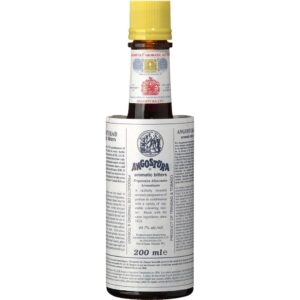
From there, it travels to the brain where it begins to have an effect on the central nervous system. This tipsiness starts when alcohol enters the bloodstream and affects the brain and body’s functions. Blood alcohol content (BAC) is the unit used to assess the amount of alcohol in a person’s bloodstream. We all know that the brain is the main source of the body’s functions. Imagine putting your brain in a jar filled with alcohol and shaking it up— it’s not a pretty picture.
- Symptoms include confusion, vomiting, slow breathing, and unconsciousness, and it can be fatal if not treated quickly.
- Genetic variations affect enzymes responsible for metabolizing ethanol—the main component in alcoholic beverages.
- Not treating hypoglycemia may cause other symptoms similar to feeling drunk but worse.
- You should try getting rid of the feeling if a medical condition is causing it.
- Time is of the essence, as alcohol poisoning at this stage can quickly lead to irreversible damage or death if professional help is not sought right away.
- If you’re visibly drunk and disruptive in public, you could face public intoxication charges.
Characteristics of a Drunk Person
There are somewhat predictablestagesthat a person will go through when they drink alcohol. Oxford House Thestages of intoxication varyfrom person to person based on a variety of factors. Reactions to alcohol will vary by weight, age, sex, rate of consumption, overall health, amount of alcohol used, and amount of food in the stomach. The table above illustrates various beverages’ standard serving sizes and their alcohol content percentages (ABV).

Tipsy vs Drunk: Difference and Comparison
When the concentration of alcohol begins to increase in your bloodstream, you’ll start to feel good. You might feel happy, more social and confident, and less inhibited. This is because alcohol stimulates the release of dopamine and serotonin, which are rightfully referred to as your “feel good” hormones.
How Drunk Am I? Signs and Symptoms to Watch For
A person’s weight, tolerance level, and food consumption also play critical roles in how quickly they feel the effects of alcohol. In this article, learn about how it feels to be drunk according to blood alcohol content (BAC) level. Feeling tipsy occurs during the early stages of alcohol intoxication. As alcohol is consumed, it is absorbed from the stomach and intestines into the bloodstream.
- A person is sober or low-level intoxicated if they have consumed one or fewer alcoholic drinks per hour.
- More than a few of our favorite films (and likely way more than these) involve actors who were either drunk previous to or as a fact of the scene itself.
- BetterHelp offers affordable mental health care via phone, video, or live-chat.
- This tipsiness begins when alcohol enters the body’s bloodstream and starts to affect the functions of the brain and body.
- At this point, the body is overwhelmed by the amount of alcohol in the bloodstream, and vital functions begin to shut down.
Stay in Control With Reframe

Alcohol will also cause cardiomyopathy which is characterized by shortness of breath, irregular heartbeat (arrhythmia), fatigue, and persistent coughing. Not only that, alcohol will also increase the risk of heart attack, stroke, and hypertension. There’s no official definition for “tipsy”, but it’s that pleasant stage where everything feels just right. You remember everything you do, and you still have control over your speech and actions.


The third way that can be done to get rid of tipsy is to drink mineral water. By drinking mineral water, body fluids can be replaced, so that the feeling of dizziness is reduced. A very severe level of alcohol intoxication is also very dangerous because it can cause seizures, vomiting, dehydration, acute kidney failure, injury, coma, which can result in death.

Even being slightly above the legal blood alcohol content (BAC) limit results in severe penalties, including license suspension and possible jail time, depending on the jurisdiction. When you’re tipsy, you experience mild impairment of coordination and judgment. This level of intoxication rarely results in legal issues unless it leads to public intoxication, disorderly conduct, or impaired driving. However, if your impairment is noticeable and disturbs others or creates danger, you receive a citation. It’s important to remember these key differences and keep them in context of our drinking goals. Whether you’re tipsy, drunk, or somewhere in between, you are in control of your own life.
The Impact of Alcohol Type
- Mentally, the person’s awareness and cognitive abilities are compromised, making it difficult for them to process information clearly or follow conversations.
- Conversely, being relaxed or in a joyful environment might allow someone to enjoy their drink without feeling overly affected by it.
- It’s vital to consider not just what’s consumed but also how quickly it’s consumed.
- As we mentioned earlier, many factors contribute to how many drinks it takes to reach intoxication.
There is still a lot we do not know about alcohol’s effects on the brain. “It has such widespread effects in the brain,” said Jessica Weafer, a psychologist at the University of Kentucky. Unlike other drugs that affect particular brain regions or act on specific receptors, “alcohol is just kind of going all over the brain” making it difficult to study, she said. Alcohol is classified as a depressant, which means it slows down brain function and neural activity. When consumed, it enters the bloodstream tipsy feeling and begins to affect neurotransmitters—chemicals that transmit signals in the brain.







